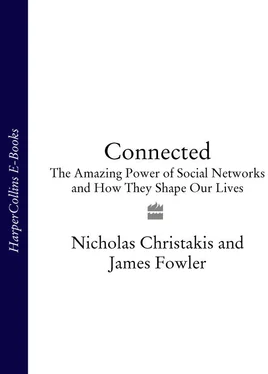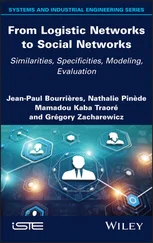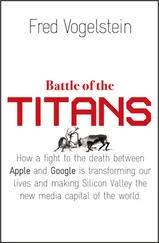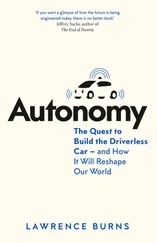NICHOLAS CHRISTAKIS, MD, PhD
and JAMES FOWLER, PhD
Connected
The Amazing Power of Social Networks
and How They Shape Our Lives
 Harper Press
Harper Press
For Erika, Sebastian, Lysander, and Eleni
and
for Harla, Lucas, and Jay
to whom our connection is aeonian
COVER
TITLE PAGE NICHOLAS CHRISTAKIS, MD, PhD and JAMES FOWLER, PhD Connected The Amazing Power of Social Networks and How They Shape Our Lives Harper Press
DEDICATION For Erika, Sebastian, Lysander, and Eleni and for Harla, Lucas, and Jay to whom our connection is aeonian
PREFACE
1. IN THE THICK OF IT
2. WHEN YOU SMILE, THE WORLD SMILES WITH YOU
3. LOVE THE ONE YOU’RE WITH
4. THIS HURTS ME AS MUCH AS IT HURTS YOU
5. THE BUCK STARTS HERE
6. POLITICALLY CONNECTED
7. IT’S IN OUR NATURE
8. HYPERCONNECTED
9. THE WHOLE IS GREAT
NOTES
INDEX
ACKNOWLEDGMENTS
PLATE SECTION
ABOUT THE AUTHORS
COPYRIGHT
ABOUT THE PUBLISHER
Social networks are intricate things of beauty. They are so elaborate and so complex—and so ubiquitous, in fact—that one has to wonder what purpose they serve. Why are we embedded in them? How do they form? How do they work? How do they affect us?
I (Nicholas) have been animated by these questions for the better part of the past ten years. I began by being interested in the simplest social network of all: a pair of people, a dyad. Initially, the dyads I studied were husbands and wives. As a physician caring for terminally ill patients and their families, I noticed the serious toll that a loved one’s death had on a spouse. And I became interested in how illness in one person might cause illness in another. For it seemed to me that if people are interconnected, their health must also be interconnected. If a wife falls ill or dies, her husband’s risk of death assuredly rises. Eventually, I began to realize that there were all kinds of dyads I might study, such as pairs of siblings or pairs of friends or pairs of neighbors who are connected (not separated) by a backyard fence.
But the intellectual heart of the matter was not in these simple arrangements. Instead, the key realization was that these dyads agglomerate to form huge webs of ties stretching far into the distance. A man’s wife has a best friend who has a husband who has a coworker who has a sibling who has a friend, and so on and so forth. These chains branch like lightning bolts, forming intricate patterns throughout human society. The situation, it seemed, was much more complicated. With every step away from an individual in a social network that we take, the number of ties to other humans, and the complexity of the branching, rise very, very fast. As I reflected on this problem, I began to read the work of other social scientists, from lonely German scholars at the turn of the twentieth century to visionary sociologists in the 1970s, who had studied social networks ranging in size from three to thirty people. But my interest lay in social networks of three thousand or thirty thousand or even three million people.
I realized that to study things of such complexity, I would make better progress if I worked with another investigator. As it turned out, James Fowler, also at Harvard, was studying networks from a completely different perspective. James and I did not know each other despite working in adjoining buildings on the same campus for several years. In 2002 we were introduced by a mutual colleague, political scientist Gary King. In other words, we started our journey as friends of a friend. Gary thought we might have common intellectual interests, and he was right. Indeed, the very fact that we met because of our social network illustrates a major point we want to make about how and why social networks operate and how they benefit us.
James had spent a number of years studying the origin of people’s political beliefs and examining how one person’s attempt to solve a social or political problem influenced others. How did humans come together to accomplish what they could not do on their own? And he shared interests in other topics that were a key part of the story: altruism and goodness, both of which are essential for social networks to grow and endure.
Together, as we began to think about the idea that people are connected in vast social networks, we realized that social influence does not end with the people we know. If we affect our friends, and they affect their friends, then our actions can potentially affect people we have never met. We began by studying various health effects. We discovered that if your friend’s friend’s friend gained weight, you gained weight. We discovered that if your friend’s friend’s friend stopped smoking, you stopped smoking. And we discovered that if your friend’s friend’s friend became happy, you became happy.
Eventually, we realized that there were fundamental rules that governed both the formation and the operation of social networks. We concluded that if we were going to study how networks function, we also had to understand how they are assembled. One cannot, for example, be friends with absolutely anybody. People are constrained by geography, socioeconomic status, technology, and even genes to have certain kinds of social relationships and to have a certain number of them. The key to understanding people is understanding the ties between them; therefore, it was to the ties that we turned our focus.
Our interest in these topics paralleled the interests of many other scholars who have advanced the mathematics and science of networks over the past ten years. As we began to study human connections, we encountered engineers studying networks of power stations, neuroscientists studying networks of neurons, geneticists studying networks of genes, and physicists studying networks of darn near everything. Their networks might be pretty too, we thought, but ours were more interesting: much more complicated and much more consequential. After all, the nodes in our networks are thinking human beings. They can make decisions, potentially changing their networks even while embedded in them and being affected by them. A network of humans has a special kind of life of its own.
Just as scientists have become interested in the underlying beauty and explanatory power of networks, the person on the street thinks about them too. This is largely due to the appearance of the Internet in people’s homes, which has given everyone a notion of how lots of things might be interconnected. People began to speak colloquially about the “Net” and eventually the “World Wide Web” (not to mention the smash-hit movie The Matrix ). And they began to realize that they were as interconnected as their computers. These connections have become explicitly social to the point that today nearly everyone is familiar with social-network websites like Facebook and MySpace.
As we studied social networks more deeply, we began to think of them as a kind of human superorganism. They grow and evolve. All sorts of things flow and move within them. This superorganism has its own structure and a function, and we became obsessed with understanding both.
Seeing ourselves as part of a superorganism allows us to understand our actions, choices, and experiences in a new light. If we are affected by our embeddedness in social networks and influenced by others who are closely or distantly tied to us, we necessarily lose some power over our own decisions. Such a loss of control can provoke especially strong reactions when people discover that their neighbors or even strangers can influence behaviors and outcomes that have moral overtones and social repercussions. But the flip side of this realization is that people can transcend themselves and their own limitations. In this book, we argue that our interconnection is not only a natural and necessary part of our lives but also a force for good. Just as brains can do things that no single neuron can do, so can social networks do things that no single person can do.
Читать дальше

 Harper Press
Harper Press










